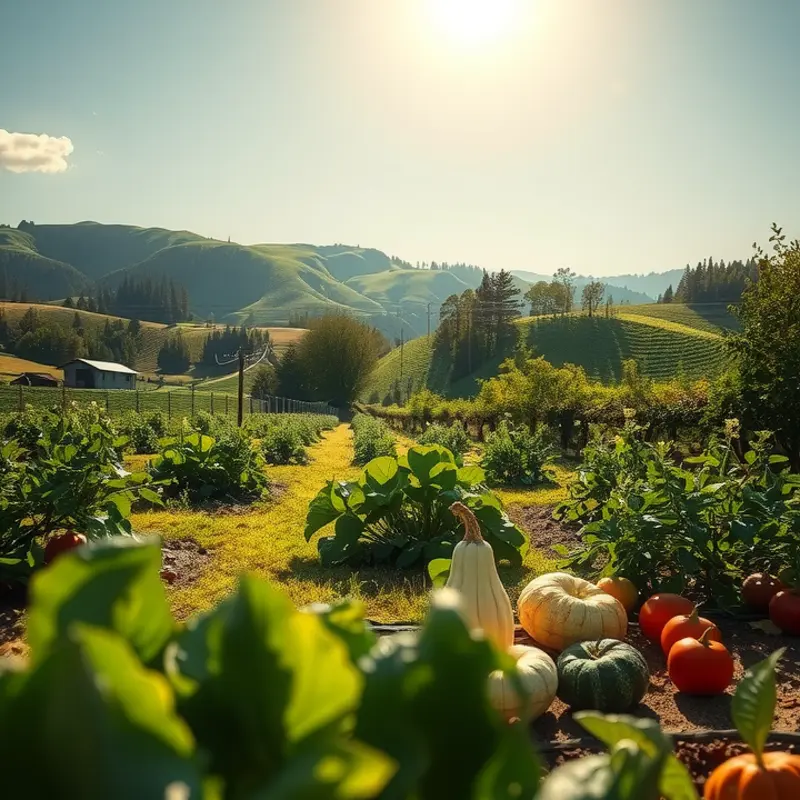Carbon-smart cooking empowers eco-conscious individuals to make food choices that minimize carbon footprints. By focusing on local produce, energy-efficient cooking methods, and responsible ingredient selection, it becomes easier to combat climate change while enjoying delicious meals. This journey towards sustainability is not just about avoiding carbon-heavy foods but about fostering a positive relationship with the environment through our culinary habits. Join us as we explore actionable ways to adopt carbon-smart cooking in your everyday life.
Seasonal Ingredients: Sourcing for Sustainability

Utilizing local and seasonal ingredients is a cornerstone of culinary sustainability. It drastically reduces the carbon footprint by minimizing the energy required for transportation, refrigeration, and storage. Sourcing these ingredients supports regional farmers and fosters sustainable agricultural practices. Identifying seasonal produce in your area can be a straightforward yet impactful step toward a more sustainable lifestyle.
The first step is understanding your region’s seasonal produce. This knowledge varies significantly depending on local climate and geography. Finding reliable resources, such as regional agricultural extension services or sustainable food guides, can help. A valuable tip is to visit farmers’ markets and engage with local farmers. These interactions provide insights into what’s fresh and abundant during each season.
Exploring farmers’ markets goes beyond just knowing what’s in season—it connects you to the local community. You’re not just purchasing ingredients but also supporting small-scale farmers committed to sustainable farming practices. Additionally, the shorter supply chain means fewer emissions and a fresher product on your table.
Joining a Community-Supported Agriculture (CSA) program is another excellent way to enjoy seasonal produce. CSA members receive fresh produce directly from the farm, which promotes a direct connection with local agriculture. Through a typical CSA subscription, you receive a box filled with the season’s bounty. This might include vegetables, fruits, herbs, or even dairy and eggs, all sourced locally. By investing in CSA programs, you support environmental sustainability and enjoy a unique culinary experience each week.
Growing your own vegetables and herbs can dramatically enhance your sustainability efforts. Even with limited space, window boxes or small vertical gardens allow for the cultivation of fresh herbs like basil, thyme, or mint. The process requires minimal resources and still provides fresh, organic flavors for your dishes.
Incorporating seasonal ingredients into your meals can lead to culinary creativity. Understand each season’s produce and plan your menu around it, experimenting with flavors and textures unique to the time of year. This approach not only ensures maximum freshness and flavor but also engages you with the natural cycle of food production.
Moreover, using seasonal produce aligns with waste reduction practices. Ingredients that are in season tend to be more cost-effective and offer higher quality due to their peak ripeness. This minimizes the need for preservation and decreases the likelihood of spoilage. For more tips on reducing food waste, you can refer to resources such as tracking food waste effectively.
Ultimately, sourcing local and seasonal ingredients allows you to contribute to a sustainable ecosystem while enriching your culinary experiences. This practice invites both environmental and personal benefits, making every meal a step toward a greener planet.
Efficient Cooking: Techniques to Lower Emissions

Reducing your carbon footprint in the kitchen begins with the choice of cooking techniques. Opting for methods like steaming or pressure cooking can significantly cut down on energy use. These techniques not only conserve energy but also retain more nutrients in your food, offering a win-win for sustainability and health.
Steaming, for instance, is an excellent method for cooking vegetables, fish, and even certain grains. It requires minimal water and energy, particularly if multiple trays are used simultaneously. The gentle heat preserves the food’s natural colors and nutrients, making your dishes not only sustainable but vibrant and healthy.
Pressure cooking stands out as another powerful ally in energy-efficient cooking. By sealing in heat and moisture, it reduces cooking time dramatically—by up to 70% in some cases—thereby saving a substantial amount of energy. This method proves especially effective for legumes and tough cuts of meat, turning them tender in no time.
An electric skillet can also serve as a versatile tool for lowering emissions. It heats uniformly, ensuring consistent cooking without excessive energy consumption. Because it often uses less electricity than conventional ovens, it’s a practical choice for dishes that require consistent, even heat.
Batch cooking and meal planning further enhance your kitchen’s eco-friendliness. By preparing meals in advance, you optimize energy use by cooking multiple portions at once. This practice not only conserves energy but also saves time and reduces stress during the busy workweek. Plus, having meals ready mitigates the temptation for last-minute, less sustainable options.
To align with sustainable practices, consider minimizing ecological impact through your diet. This can complement your efficient cooking efforts and ensure that your entire meal-consumption process is environmentally sound.
Creative use of leftovers is another key to efficient, lower-emission cooking. Transform excess cooked grains into a breakfast porridge or leftover vegetables into a hearty soup. This not only prevents food waste but also reduces the energy required to prepare new meals.
Finally, the reduction of food scraps plays a crucial role in sustainable cooking. Instead of discarding vegetable peels or herb stems, consider turning them into stock or composting scraps that would otherwise contribute to landfill pressure. By making conscientious choices throughout the cooking process, from preparation to cleanup, you’re making every meal a step toward a greener planet.
Final words
Adopting carbon-smart cooking is a rewarding journey that not only benefits the environment but enriches our culinary experiences. By focusing on local ingredients and employing energy-efficient techniques, you can significantly reduce your carbon footprint. Remember, every small change contributes to the larger goal of sustainability. Embrace this journey with enthusiasm, knowing that each intentional choice supports a healthier planet for future generations. Let your kitchen be a place of inspiration, creativity, and above all, eco-conscious meals that celebrate the bounty of nature.








